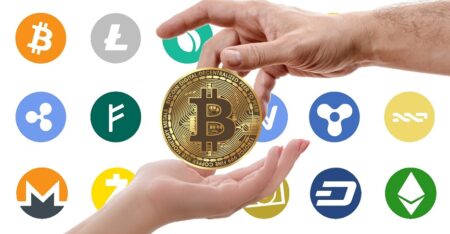THE federal Treasurer has published a report about the reform of Australia’s payment system.
A country’s payment system is made up of a number of systems.
Cash is one system. Cheques represent another.
They used to be the two main systems, but it’s getting crowded.
Credit cards have been around for a long time, but these have now moved away from carbon copy payment slips you had to sign by hand. A little wave over a small computer screen is all it takes these days to separate you from your money.
COVID restrictions have meant that a lot more shopping now gets done online using a digital payment system, such as credit cards but also PayPal or the new Buy-Now-Pay-Later kids on the block, about which we have previously written.
Then there are cryptocurrencies like Bitcoin.
While you can’t yet do your groceries at Coles or Woolies using Bitcoin, cryptocurrencies are increasingly knocking on the door. At the moment, they are mainly used by speculators, who like the huge swings in value, and criminals, who want to hide their money.
Blockchain technology at the heart of cryptocurrencies like Bitcoin is one that governments around the world, including the Australian Government, are looking at closely.
Bitcoin and blockchain technology seem to be inseparable, but they aren’t.
Bitcoin introduced it, and its viability depends on it, but blockchain technology is indisputably useful.
Blockchain technology is the creation of computer records which cannot be tampered with. The trick of why this works so well is to hold the same computer records not in one computer (owned by the bank, for example) but in millions of computers owned by millions of organisations or people. All these computer records are cross-referenced to each other. In this way, it’s impossible to change these records, because you can’t just change one, you would need to change them all.
For example, you deposit $1,000 into your bank account. A hacker now gets into the bank’s database and steals $900 of your deposit. The hacker changes the record to show you deposited $100, not the $1,000 you actually deposited. Will you be believed?
If the bank had used not a single database but what’s called a ‘dispersed database’ (using blockchain technology), the hacker would not even have bothered to try and steal your deposit.
Back to the federal Treasurer’s report.
The Treasurer in his report covers all these new developments and gravely states, as Treasurers will, that they must be addressed.
And they must be.
There’s just one thing in his report that should ring the alarm bells for anybody concerned about good financial governance of Australia’s payment system. The Treasurer’s to-do-list (by mid-2022) is for the Government to have “settled the details of additional powers for the Treasurer to set payment system policy”.
This represents an attempt to give the federal Treasurer powers which now belong to the independent Reserve Bank of Australia through its Payments System Board.
One to watch, because financial entrepreneurs will attempt to arm-twist any politician occupying the office of federal Treasurer to reform the payment system not in favour of ordinary Australians but in favour of themselves.
With a federal election coming up, both the Government and the Opposition have committed to a review of the Reserve Bank.
Also read:
How your funeral is not your funeral
Pension review to put housing in order
